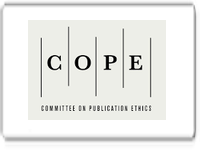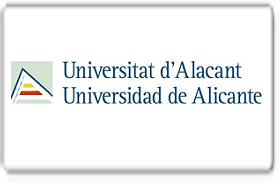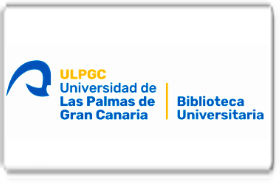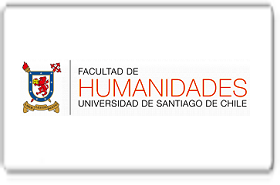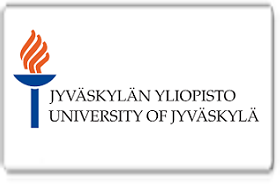Manejo Anestésico de Paciente con Síndrome Respiratorio Braquiocefálico Sometido a Cirugía Correctiva: Estudio de Caso
DOI:
https://doi.org/10.56048/MQR20225.8.1.2024.4462-4488Palabras clave:
Protocolo; Cirugía; Anestésicos; FármacosResumen
El objetivo de esta investigación es evaluar el manejo anestésico, elaborando un protocolo específico para la anestesia de pacientes American Bully sometidos a cirugía correctiva del Síndrome Respiratorio Braquiocefálico
Se presenta un protocolo anestésico específicamente diseñado para una paciente de la raza American Bully sometida a cirugía correctiva del Síndrome Braquicéfalo (SRB). Dado el riesgo potencial de problemas cardíacos asociados con esta patología en esta raza, se realizaron exámenes diagnósticos, como un electrocardiograma y radiografías, antes de la intervención programada para corregir el síndrome.
Para garantizar la seguridad de la paciente, se seleccionaron cuidadosamente los fármacos anestésicos teniendo en cuenta los resultados de los diagnósticos. El protocolo incluyó la administración de Omeprazol para prevenir complicaciones gastrointestinales, Maropitant para controlar náuseas y vómitos, Dipirona como analgésico antiinflamatorio, Butorfanol como premedicación, Propofol para el mantenimiento, Sevoflurano para la anestesia inhalatoria, Meloxicam para la analgesia antiinflamatoria, Morfina para el control del dolor, Atropina como premedicación y Adrenalina para situaciones de emergencia.
Resultados: Los datos recopilados en las tablas resaltan la adecuación de la selección de los fármacos anestésicos para la paciente. Durante la intervención quirúrgica, no se observaron complicaciones significativas, y las constantes fisiológicas se mantuvieron dentro de los rangos preestablecidos. Este comportamiento evidencia claramente la eficacia del conjunto de fármacos utilizados tanto en la fase preanestésica como en el mantenimiento de la anestesia. Estos resultados permiten concluir que la paciente respondió de manera favorable al protocolo anestésico implementado, lo que respalda sólidamente la seguridad y efectividad del procedimiento quirúrgico realizado.
Descargas
Métricas
Cited
DOI: 10.56048![]()
Citas
Abed, J., Pike, F., Clare, M., & Brainard, B. (2013). The Cardiovascular Effects of Sevoflurane and Isoflurane After Premedication of Healthy Dogs Undergoing Elective Surgery. Journal of the American Animal Hospital Association, 50. https://doi.org/10.5326/JAAHA-MS-5963
Agudelo, C. F., & Schanilec, P. (2015). Pulmonary oedema in a hunting dog: A case report. Veterinární Medicína, 60(8), 446-449. https://doi.org/10.17221/8419-VETMED
Ambros, B., Carrozzo, M. V., & Jones, T. (2018). Desaturation times between dogs preoxygenated via face mask or flow-by technique before induction of anesthesia. Veterinary Anaesthesia and Analgesia, 45. https://doi.org/10.1016/j.vaa.2018.03.004
Appelgrein, C., nueva, E. a sitio externo E. enlace se abrirá en una ventana, Hosgood, G., Thompson, M., & Coiacetto, F. (2022). Quantification of gastroesophageal regurgitation in brachycephalic dogs. Journal of Veterinary Internal Medicine, 36(3), 927-934. https://doi.org/10.1111/jvim.16400
Barchard-Couts, A., on behalf of the Brachycephalic Study Group, & Rozanski, E. (2022). Syndromic surveillance of the frequency and severity of respiratory compromise of brachycephalic dogs in ICUs. Journal of Veterinary Emergency and Critical Care (San Antonio, Tex.: 2001), 32(1), 146-149. https://doi.org/10.1111/vec.13111
Barry, L. (2020). In dogs undergoing anaesthesia do pre-anaesthetic gastroprotectants reduce gastro-oesophageal reflux? Veterinary Evidence, 5. https://doi.org/10.18849/ve.v5i4.340
Biello, P., Bateman, S. W., & Kerr, C. L. (2018). Comparison of fentanyl and hydromorphone constant rate infusions for pain management in dogs in an intensive care unit. Veterinary Anaesthesia and Analgesia, 45(5), 673-683. https://doi.org/10.1016/j.vaa.2018.05.005
Bodnarova, T., Hall, E., & Duplan, F. (2022). Prescribing habits for the use of omeprazole as a gastroprotectant in dogs in a veterinary teaching hospital. Journal of Small Animal Practice, 63(10), 769-775. https://doi.org/10.1111/jsap.13531
Brohan, J., & Goudra, B. (2017). The Role of GABA Receptor Agonists in Anesthesia and Sedation. CNS Drugs, 31. https://doi.org/10.1007/s40263-017-0463-7
Bruchim, Y., Itay, S., Shira, B.-H., Kelmer, E., Sigal, Y., Aroch, I., & Segev, G. (2012). Evaluation of lidocaine treatment on frequency of cardiac arrhythmias, acute kidney injury, and hospitalization time in dogs with gastric dilatation volvulus. Journal of veterinary emergency and critical care (San Antonio, Tex. : 2001), 22, 419-427. https://doi.org/10.1111/j.1476-4431.2012.00779.x
Cadavid-Puentes, A., Bermúdez-Guerrero, F. J., Giraldo-Salazar, O., Muñoz-Zapata, F., Otálvaro-Henao, J., Ruíz-Sierra, J., Alvarado-Ramírez, J., Hernández-Herrera, G., & Aguirre-Acevedo, D. C. (2017). Comparison of the effectiveness of fentanyl versus morphine for severe postoperative pain management. A randomized, double blind, clinical trial. Colombian Journal of Anesthesiology, 45(2), 100-107. https://doi.org/10.1016/j.rcae.2016.12.004
Canola, R., Sousa, M., Braz, J., Zamora Restan, A., Yamada, D., Filho, J., & Camacho, A. (2018). Cardiorespiratory evaluation of brachycephalic syndrome in dogs. Pesquisa Veterinária Brasileira, 38, 1130-1136. https://doi.org/10.1590/1678-5150-pvb-5376
Castañer, J. F., Carmona, S. Q., Bernal, C. M., Rodríguez, J. M., nueva, E. a sitio externo E. enlace se abrirá en una ventana, Calvo, R. N., Machuca, M. del M. G., & nueva, E. a sitio externo E. enlace se abrirá en una ventana. (2023). Sedation Quality and Cardiorespiratory, Echocardiographic, Radiographic and Electrocardiographic Effects of Intramuscular Alfaxalone and Butorphanol in Spanish Greyhound Dogs. Animals, 13(18). https://doi.org/10.3390/ani13182937
Cattai, A., Rabozzi, R., Ferasin, H., Isola, M., & Franci, P. (2018). Haemodynamic changes during propofol induction in dogs: New findings and approach of monitoring. BMC Veterinary Research, 14, 282. https://doi.org/10.1186/s12917-018-1608-8
Ceballos, M. (2023). Anestesia en perros braquicefálicos: Manejo preventivo de complicaciones frecuentes. Revista Methodo: Investigación Aplicada a las Ciencias Biológicas, 8(3), 129-133.
Cerdà, E. C., nueva, E. a sitio externo E. enlace se abrirá en una ventana, Zajc, A. L., Finotello, R., nueva, E. a sitio externo E. enlace se abrirá en una ventana, Macdonald, K., Lyseight, F., Van Den Steen, N., Gonzalez, K. S., Marrington, M., & Grant, J. (2023). Meloxicam in Combination with Mitoxantrone or Vinblastine as First-Line Treatment for Non-Resectable Urothelial Cell Carcinoma in Dogs. Veterinary Sciences, 10(8). https://doi.org/10.3390/vetsci10080529
Charalambous, M., nueva, E. a sitio externo E. enlace se abrirá en una ventana, Volk, H. A., Ham, L. V., & Bhatti, S. F. M. (2021). First-line management of canine status epilepticus at home and in hospital-opportunities and limitations of the various administration routes of benzodiazepines. BMC Veterinary Research, 17, 1-19. https://doi.org/10.1186/s12917-021-02805-0
Clarke, D., Holt, D., & King, L. (2011). Partial Resolution of Hypoplastic Trachea in Six English Bulldog Puppies with Bronchopneumonia. Journal of the American Animal Hospital Association, 47, 329-335. https://doi.org/10.5326/JAAHA-MS-5596
Conte, A., Berlato, D., Rasotto, R., Bass, J., Bussadori, R., Nicoli, S., & Murgia, D. (2022). Comparison of harmonic shears, diode laser, and scissor cutting and suturing for caudal palatoplasty in dogs with brachycephalic obstructive airway syndrome. The Veterinary Journal, 280, 105802. https://doi.org/10.1016/j.tvjl.2022.105802
Copeland, J., Hofmeister, E., Brainard, B., & Quandt, J. (2017). Reliability of video recordings to evaluate quality of anesthesia recovery in dogs. Veterinary Anaesthesia and Analgesia, 44. https://doi.org/10.1016/j.vaa.2016.03.009
Costa, J., nueva, E. a sitio externo E. enlace se abrirá en una ventana, Steinmetz, A., & Delgado, E. (2021). Clinical signs of brachycephalic ocular syndrome in 93 dogs. Irish Veterinary Journal, 74, 1-8. https://doi.org/10.1186/s13620-021-00183-5
Devito, F. C., Patricio, G. C. F., Flôr, P. B., Vendramini, T. H. A., Amaral, A. R., Pfrimer, K., Brunetto, M. A., & Cortopassi, S. R. G. (2020). Comparative study of anaesthesia induction in obese dogs using propofol dosages based on lean body weight or total body weight. Veterinary and Animal Science, 10, 100131. https://doi.org/10.1016/j.vas.2020.100131
Dupre, G., Findji, L., & Oechtering, G. (2013). Brachycephalic Airway Syndrome. Small Animal Soft Tissue Surgery, 167-183. https://doi.org/10.1002/9781118997505.ch19
Engti, S., Nath, P., Sarma, K., Nath, N., & Sarma, J. (2020). Tramadol and Butorphanol in post-surgical pain management in canine. International Journal of Chemical Studies, 8, 151-153. https://doi.org/10.22271/chemi.2020.v8.i5c.10495
Eom, K., Moon, K., Seong, Y., Oh, T., Yi, S., Lee, K., & Jang, K. (2009). Ultrasonographic evaluation of tracheal collapse in dogs. Journal of veterinary science, 9, 401-405. https://doi.org/10.4142/jvs.2008.9.4.401
Fenner, J., Quinn, R., & Demetriou, J. (2019). Postoperative regurgitation in dogs after upper airway surgery to treat brachycephalic obstructive airway syndrome: 258 cases (2013‐2017). Veterinary Surgery, 49. https://doi.org/10.1111/vsu.13297
Freiche, V., & German, A. J. (2021). Digestive Diseases in Brachycephalic Dogs. Veterinary Clinics of North America: Small Animal Practice, 51(1), 61-78. https://doi.org/10.1016/j.cvsm.2020.09.006
Gomes, V., Barbosa, D., Motta, A., Corrêa, C., Moreno, D., & Silva, M. (2020). Evaluation of nalbuphine, butorphanol and morphine in dogs during ovariohysterectomy and on early postoperative pain. Veterinary Anaesthesia and Analgesia, 47. https://doi.org/10.1016/j.vaa.2020.07.035
Grimes, J. A., Davis, A. M., Wallace, M. L., Sterman, A. A., Thieman-Mankin, K. M., Lin, S., Scharf, V. F., Hlusko, K. C., Matz, B. M., Cornell, K. K., Vetter, C. A. M., & Schmiedt, C. W. (2019). Long-term outcome and risk factors associated with death or the need for revision surgery in dogs with permanent tracheostomies. Journal of the American Veterinary Medical Association, 254(9), 1086-1093. Scopus. https://doi.org/10.2460/javma.254.9.1086
Grimm, K. A., Lamont, L. A., Tranquilli, W. J., Greene, S. A., & Robertson, S. A. (2015). Lumb & Jones’ Veterinary Anesthesia and Analgesia, 5th edn: Anaesthesia and pain management. Veterinary Record, 177(13), 342-342.
Henao-Guerrero, N., Ricco-Pereira, C. H., nueva, E. a sitio externo E. enlace se abrirá en una ventana, Paranjape, V. V., & nueva, E. a sitio externo E. enlace se abrirá en una ventana. (2023). A Comparison of Dobutamine, Norepinephrine, Vasopressin, and Hetastarch for the Treatment of Isoflurane-Induced Hypotension in Healthy, Normovolemic Dogs. Animals, 13(16). https://doi.org/10.3390/ani13162674
Huanca, H., & David, J. (2016). Evaluación de cuatro protocolos de anestesia sobre las variaciones en las funciones vitales en la ovariohisterectomía canina. Revista de Investigaciones Veterinarias del Perú, 27(3), 458-466. https://doi.org/10.15381/rivep.v27i3.11427
Imagawa, V., Fantoni, D., Tatarunas, A., Mastrocinque, S., Almeida, T., Ferreira, F., & Posso, I. (2011). The use of different doses of metamizol for post-operative analgesia in dogs. Veterinary anaesthesia and analgesia, 38, 385-393. https://doi.org/10.1111/j.1467-2995.2011.00617.x
Interlandi, C., Pietro, S. D., nueva, E. a sitio externo E. enlace se abrirá en una ventana, Costa, G. L., nueva, E. a sitio externo E. enlace se abrirá en una ventana, Spadola, F., Iannelli, N. M., Macrì, D., Ferrantelli, V., Macrì, F., & nueva, E. a sitio externo E. enlace se abrirá en una ventana. (2022). Effects of Cisatracurium in Sevoflurane and Propofol Requirements in Dog-Undergoing-Mastectomy Surgery. Animals, 12(22). https://doi.org/10.3390/ani12223134
Italiano, M., & Robinson, R. (2018). Effect of benzodiazepines on the dose of alfaxalone needed for endotracheal intubation in healthy dogs. VETERINARY ANAESTHESIA AND ANALGESIA, 45(6), 720-728. https://doi.org/10.1016/j.vaa.2018.06.011
Kaye, B., Boroffka, S., Haagsman, A., & ter Haar, G. (2015). Computed tomographic, radiographic, and endoscopic tracheal dimensions in english bulldogs with grade 1 clinical signs of brachycephalic airway syndrome. Veterinary Radiology & Ultrasound, 56. https://doi.org/10.1111/vru.12277
Kojima, K., Ishizuka, T., Sasaki, N., Nakamura, K., & Takiguchi, M. (2021). Cardiovascular effects of dose escalating of norepinephrine in healthy dogs anesthetized with isoflurane. Veterinary Anaesthesia and Analgesia, 48(5), 654-662. https://doi.org/10.1016/j.vaa.2021.06.010
Kramer, B., Hellyer, P., Rishniw, M., & Kogan, L. (2022). Anesthetic and analgesic techniques used for dogs undergoing ovariohysterectomies in general practice in the United States. Veterinary Anaesthesia and Analgesia, 49. https://doi.org/10.1016/j.vaa.2022.07.010
Kraus, B. L. H. (2017). Spotlight on the perioperative use of maropitant citrate. Veterinary Medicine: Research and Reports, 8, 41-51. https://doi.org/10.2147/VMRR.S126469
León-Zuluaga, Á. C., & Cruz-Amaya, J. M. (2019). Monitoreo anestésico de la mezcla tiopental-propofol en hembras caninas durante la ovariohisterectomía. Orinoquia, 23(1), 48-53. https://doi.org/10.22579/20112629.541
Liu, N.-C., Oechtering, G., Adams, V., Kalmár, L., Sargan, D., & Ladlow, J. (2017). Outcomes and prognostic factors of surgical treatments for brachycephalic obstructive airway syndrome in 3 breeds. Veterinary Surgery, 46, 271-280. https://doi.org/10.1111/vsu.12608
López-Ramos, J. M., Gómez-Sainz, J. J., Manzano-Canalechevarria, A., & Aguilera-Celorrio, L. (2016). Sevoflurano como coadyuvante en la sedación durante ventilación mecánica en pacientes médicos de unidad de cuidados intensivos: Resultados preliminares en una serie de casos. Revista Colombiana de Anestesiología, 44(1), 52-57. https://doi.org/10.1016/j.rca.2015.05.008
Lorenzutti, A., Martin-Flores, M., Litterio, N., Himelfarb, M., Invaldi, S., & Zarazaga, M. (2017). A comparison between maropitant and metoclopramide for the prevention of morphine-induced nausea and vomiting in dogs. The Canadian veterinary journal. La revue veterinaire canadienne, 58, 35-38.
Lotti, F., Twedt, D., Warrit, K., Bryan, S., Vaca, C., Krause, L., Fukushima, K., & Boscan, P. (2021). Effect of two different pre‐anaesthetic omeprazole protocols on gastroesophageal reflux incidence and pH in dogs. Journal of Small Animal Practice, 62. https://doi.org/10.1111/jsap.13328
Lovell, S., Bradley, S., Boudreau, E. C., Mankin, J., & Jeffery, N. (2022). Randomized clinical trial comparing outcomes after fentanyl or ketamine‐dexmedetomidine analgesia in thoracolumbar spinal surgery in dogs. Journal of Veterinary Internal Medicine, 36(5), 1742-1751. https://doi.org/10.1111/jvim.16514
Luna, S., Basílio, A., Steagall, P., Machado, L., Moutinho, F., Takahira, R., & Brandão, C. (2007). Evaluation of adverse effects of long-term oral administration of carprofen, etodolac, flunixin meglumine, ketoprofen, and meloxicam in dogs. American journal of veterinary research, 68, 258-264. https://doi.org/10.2460/ajvr.68.3.258
Marzok, M., Almubarak, A., Kandeel, M., EL-Deeb, Prof. Dr. W., Babiker, H., & El-Hawari, S. (2023). A randomized crossover study of the effect of butorphanol–lidocaine and tramadol–lidocaine on sevoflurane’s minimum alveolar concentration in dogs. Frontiers in Veterinary Science, 9, 1057580. https://doi.org/10.3389/fvets.2022.1057580
Mathis, A. (2017). Difficult orotracheal intubation in dogs and cats. In Practice, 39(2). https://doi.org/10.1136/inp.j133
McCormack, R., Olley, L., Glanemann, B., & Swann, J. W. (2020). Prospective observational study of the use of omeprazole and maropitant citrate in veterinary specialist care. Scientific Reports, 10(1). Scopus. https://doi.org/10.1038/s41598-020-72950-3
Melis, S., Schauvliege, S., Bosmans, T., Gasthuys, F., & Polis, I. (2014). Pulmonary edema as a postoperative complication in two obese patients (a horse and a dog). Vlaams Diergeneeskundig Tijdschrift, 83. https://doi.org/10.21825/vdt.v83i2.16657
Miljkovic, M., Rancic, N., Simić, R., Stamenkovic, D., & Dragojevic Simic, V. (2018). Metamizole: Current status of the safety and efficacy. Hospital Pharmacology - International Multidisciplinary Journal, 5, 694-704. https://doi.org/10.5937/hpimj1803694M
Miller, L., Pryke, S., Panti, A., & Marcilla, M. (2020). Endotracheal tube complication during extubation following surgical repair of a traumatic tracheal laceration. Veterinary Record Case Reports, 8, e001087. https://doi.org/10.1136/vetreccr-2020-001087
Mitze, S., Barrs, V. R., Beatty, J. A., Hobi, S., nueva, E. a sitio externo E. enlace se abrirá en una ventana, & Bęczkowski, P. M. (2022). Brachycephalic obstructive airway syndrome: Much more than a surgical problem. The Veterinary Quarterly, 42(1), 213-223. https://doi.org/10.1080/01652176.2022.2145621
Mostafa, A. A., & Berry, C. R. (2022). Radiographic vertical tracheal diameter assessment at different levels along the trachea as an alternative method for the evaluation of the tracheal diameter in non-brachycephalic small breed dogs. BMC Veterinary Research, 18, 1-9. https://doi.org/10.1186/s12917-022-03160-4
Norgate, D., ter Haar, G., Kulendra, N., & Veres-Nyéki, K. (2018). ‘A comparison of the effect of propofol and alfaxalone on laryngeal motion in non-brachycephalic and brachycephalic dogs’. Veterinary Anaesthesia and Analgesia, 45. https://doi.org/10.1016/j.vaa.2018.06.013
Ogden, J., Ovbey, D., & Saile, K. (2019). Effects of preoperative cisapride on postoperative aspiration pneumonia in dogs with laryngeal paralysis. Journal of Small Animal Practice, 60(3), 183-190. Scopus. https://doi.org/10.1111/jsap.12940
Oshita, R., Katayose, S., Kanai, E., & Takagi, S. (2022). Assessment of Nasal Structure Using CT Imaging of Brachycephalic Dog Breeds. Animals, 12, 1636. https://doi.org/10.3390/ani12131636
Palma, C. D., Pasolini, M. P., nueva, E. a sitio externo E. enlace se abrirá en una ventana, Navas, L., Campanile, A., Lamagna, F., Fatone, G., nueva, E. a sitio externo E. enlace se abrirá en una ventana, Micieli, F., nueva, E. a sitio externo E. enlace se abrirá en una ventana, Esposito, C., Donnarumma, D., Uccello, V., & Lamagna, B. (2022). Endoscopic and Surgical Removal of Gastrointestinal Foreign Bodies in Dogs: An Analysis of 72 Cases. Animals, 12(11). https://doi.org/10.3390/ani12111376
Paul, E., Coombe, E., McGreevy, P., Packer, R., & Neville, V. (2023). Are Brachycephalic Dogs Really Cute? Evidence from Online Descriptions. Anthrozoös, 36, 1-21. https://doi.org/10.1080/08927936.2023.2176590
Pereira, M. AA., Campos, K. D., Gonçalves, L. A., dos Santos, R. ST., Flôr, P. B., Ambrósio, A. M., Otsuki, D. A., Matera, J. M., Gomes, C. OMS., & Fantoni, D. T. (2021). Cyclooxygenases 1 and 2 inhibition and analgesic efficacy of dipyrone at different doses or meloxicam in cats after ovariohysterectomy. Veterinary Anaesthesia and Analgesia, 48(1), 7-16. https://doi.org/10.1016/j.vaa.2020.10.004
Petchell, W. H. R., Noble, P.-J. M., Broome, H. A. O., & Burrow, R. (2022). Incidence of alimentary and respiratory disease in brachycephalic dogs presenting to primary care veterinary practices participating in the SAVSNET project. Veterinary Record, 191(7), e1685. https://doi.org/10.1002/vetr.1685
Quain, A., Barrs, V., Awad, M., Child, G., Brunel, L., Mooney, E., Martinez-Taboada, F., Mcdonald, B., & McGreevy, P. (2018). Consequences and Management of Canine Brachycephaly in Veterinary Practice: Perspectives from Australian Veterinarians and Veterinary Specialists. Animals, 9, 1-25. https://doi.org/10.3390/ani9010003
Rafee, M., KINJAVDEKAR, P., Amarpal, A., & Aithal, H. P. (2017). Evaluation of midazolam as intravenous induction agent for anaesthesia in dogs. The Indian journal of animal sciences, 87, 280-286. https://doi.org/10.56093/ijans.v87i3.68843
Reid, K. (2018). Perioperative gastrointestinal reflux in dogs. In Practice, 40(9). https://doi.org/10.1136/inp.k4353
Rezaeipour, A., Naddaf, H., Jalali, S. M., & Sabiza, S. (2021). Evaluation of intraperitoneal administration of morphine on post‐operative pain management after ovariohysterectomy in dogs. Veterinary Medicine and Science, 8. https://doi.org/10.1002/vms3.668
Robaj, A., Mazreku, N., Sylejmani, D., Hamidi, A., & Alishani, M. (2020). Comparison of Most Common Anesthetic Protocols Used in Dogs in Kosovo. 46, 81-86. https://doi.org/10.5152/actavet.2020.19031
Santos, M., Hainfellner, D., Lemos, N., Macambira, K., Carmo, J., Alberigi, B., Athar, C., Mendes, A., Veiga, C., Soares, A., Botteon, P., Fernandes, J., & Paiva, J. (2020). Study of heart rate variability in dogs with brachycephalic syndrome that underwent rhinoplasty. Brazilian Journal of Veterinary Medicine, 42. https://doi.org/10.29374/2527-2179.bjvm104920
Seneviratne, M., nueva, E. a sitio externo E. enlace se abrirá en una ventana, Kaye, B. M., & Haar, G. T. (2020). Prognostic indicators of short-term outcome in dogs undergoing surgery for brachycephalic obstructive airway syndrome. The Veterinary Record, 187(10), 403-403. https://doi.org/10.1136/vr.105624
Simon, B., & Steagall, P. (2017). The present and future of opioid analgesics in small animal practice. Journal of Veterinary Pharmacology and Therapeutics, 40, 315-326. https://doi.org/10.1111/jvp.12377
Song, Y., Kim, Y., Kim, J., Kim, K.-N., Oh, S., & Kim, H.-J. (2022). Management of Pulmonary Hypertension Due to Brachycephalic Obstructive Airway Syndrome in a Dog. Journal of Veterinary Clinics, 39(5), 240-245. Scopus. https://doi.org/10.17555/jvc.2022.39.5.240
Swallow, A., Rioja, E., Elmer, T., & Dugdale, A. (2017). The effect of maropitant on intraoperative isoflurane requirements and clinical signs of postoperative nausea and vomiting in dogs undergoing ovariohysterectomy: A randomized clinical trial. Veterinary Anaesthesia and Analgesia, 44. https://doi.org/10.1016/j.vaa.2016.10.006
Taylor, S. (2022). Endotracheal intubation of the dog and cat. The Veterinary Nurse, 13, 188-193. https://doi.org/10.12968/vetn.2022.13.4.188
Teixeira, R., Monteiro, E., Campagnol, D., Coelho, K., Bressan, T., & Monteiro, B. (2013). Effects of tramadol alone, in combination with meloxicam or dipyrone, on postoperative pain and the analgesic requirement in dogs undergoing unilateral mastectomy with or without ovariohysterectomy. Veterinary anaesthesia and analgesia, 40. https://doi.org/10.1111/vaa.12080
Temwichitr, J., Pongchairerk, U., Sutthiprapa, W., & Temwichitr, P. (2019). Evaluation of pre-and postoperative clinical signs, endoscopic findings and histomorphology of caudal soft palates in french bulldogs with brachycephalic obstructive airway syndrome that underwent elongated soft palate surgery. Veterinary Integrative Sciences, 17(1), 87-99. Scopus.
Trauffler, L., Schuller, S., Kovacevic, A., & Tichy, A. (2019). Establishing reference standards for the vasovagal tonus index in a cohort of healthy French Bulldogs. Schweizer Archiv fur Tierheilkunde, 161, 821-829. https://doi.org/10.17236/sat00238
Vera, V., Quiroz, M. A., & Vargas, P. A. (2021). Tolerancia al ejercicio submáximo en caninos obesos y braquiocefálicos en gran altura. Revista Veterinaria, 32(2), Article 2. https://doi.org/10.30972/vet.3225740
Wagner, M. C., Hecker, K. G., & Pang, D. S. J. (2017). Sedation levels in dogs: A validation study. BMC Veterinary Research, 13. https://doi.org/10.1186/s12917-017-1027-2
Walton, S., Ryan, K., Davis, J., & Acierno, M. (2017). Treatment of meloxicam overdose in a dog via therapeutic plasma exchange. Journal of veterinary emergency and critical care (San Antonio, Tex. : 2001), 27. https://doi.org/10.1111/vec.12607
Wamaitha, M. N., Mogoa, E. M., & Mande, J. D. (2019). Evaluation of anesthesia produced by ketofol in acepromazine- or medetomidine-sedated dogs. Journal of Advanced Veterinary and Animal Research, 6(2), 215-221. https://doi.org/10.5455/javar.2019.f335
Wright, K., Nguyenba, T., & Irvin, H. (2019). Lidocaine for chemical cardioversion of orthodromic atrioventricular reciprocating tachycardia in dogs. Journal of Veterinary Internal Medicine, 33. https://doi.org/10.1111/jvim.15546
Zapata, A., Laredo, F. G., Escobar, M., Agut, A., Soler, M., & Belda, E. (2018). Effects of midazolam before or after alfaxalone for co-induction of anaesthesia in healthy dogs. Veterinary Anaesthesia and Analgesia, 45(5), 609-617. https://doi.org/10.1016/j.vaa.2018.04.002
Publicado
Cómo citar
Número
Sección
Categorías
Licencia

Esta obra está bajo una licencia internacional Creative Commons Atribución 4.0.
Los autores se comprometen a respetar la información académica de otros autores, y a ceder los derechos de autor a la Revista MQRInvestigar, para que el artículo pueda ser editado, publicado y distribuido. El contenido de los artículos científicos y de las publicaciones que aparecen en la revista es responsabilidad exclusiva de sus autores. La distribución de los artículos publicados se realiza bajo una licencia 


















